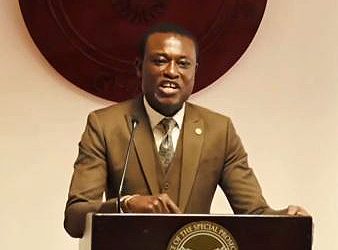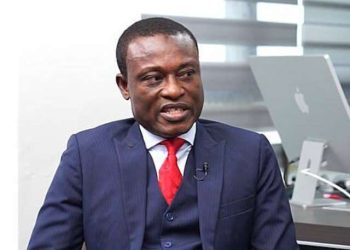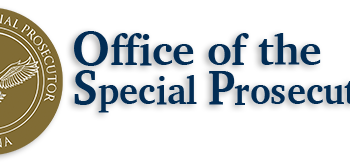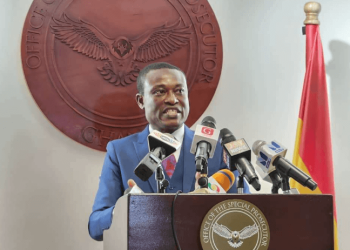Emergency response to accidents is vital, with a number of stakeholders being the major players. The police, the fire service team, the ambulance service, and the hospitals are the key stakeholders. One might ask what roles these teams play.
•The police do the assessment, markings to ascertain the faulting party, towing of the vehicle to ensure the roads are motorable by other road users, and prosecution of the faulting party.
•The fire service does the cutting of the vehicles to help bring out victims from the trapped vehicles and ensure no fire breaks out.
•The ambulance service conveys victims to the hospital, giving them first aid and a reroute.
•The hospitals give medical treatment to victims.
However, a lot of the immediate response to accidents on the roads rests on the shoulders of the police and then the medical practitioners.
As accidents unfold on the streets of Ghana, crowds gather quickly at the scene. These are a mix of concerned citizens, curious onlookers, and sometimes even thieves. Among these groups of people, only a few individuals would have basic knowledge of first aid, with limited abilities when faced with severe injuries and fatalities.
Dread and confusion always fill the air as untrained citizens try their best to provide assistance in the best way they can. The curious onlookers use their phones to record the incident, not bothering about the precious lives that may be lost within minutes without assistance, as they want to be among the first people to break the news. Others frantically call or alert the police, fire service, and ambulance services, and in some cases, call the radio stations, as they serve as credible mouthpieces in the nation and can easily draw the attention of the authorities to the accident site, while some unscrupulous citizens go through the bags, wallets, clothes, etc. of the victims to steal money and whatever they find valuable.
In most cases, the police always arrive on time, as we find them stationed in various communities; it is only on a few occasions that we see the fire service on accident sites, though in most cases there is a need to ensure that there is no fire outbreak.
Almost always, the arrival of the ambulances is delayed as Ghana’s emergency response system has been facing various issues, including a shortage of ambulances, although in the last few years it has seen a drastic improvement. These improvements need more furnishing as the number of ambulances cannot serve the various communities, and in some cases, there is a lack of coordination between the ambulance drivers and the Ghana ambulance service itself. In some instances, victims, emergency responders, or family members have to pay for fuel before victims are transported; as these operators claim, the ambulances have no fuel in them. The conditions or lives of victims worsen with each passing second without professional help; hence, people around cough up the money for fuel.
The fortunate victims who are quickly rushed to the hospital face yet another challenge. Most hospitals are overwhelmed; though they are trained to handle trauma, our medical facilities do not equip them to handle multiple injured victims at the same time. Lack of beds and other medical resources poses a major challenge. Victims who find themselves in the hospital have to endure long hours of sitting in chairs and sometimes even standing to receive IV infusions, as the place is always choked.
Because of the number of patients, victims have to wait in line for medical attention. Most patients with minimal injuries are treated and made to go home when, under normal circumstances, they are supposed to stay overnight in the hospital.

I take you back to the day I was involved in an accident, as I indicated in the Menace of Road Accidents.
Luckily, or as divinely orchestrated, it happened in the presence of the police, and hence help came quickly; however, when I was lifted out of the car, I was held by three men to stand on my feet while still dizzy from the impact. It took a different person to note that my leg was broken and was protruding before I was made to lie down on the grass in the median. (The practical thing to do was to immediately put the victim in a resting position with the head elevated.) I had no visible blood; hence, every helping hand thought I was okay until one person saw that my leg was broken; hence, I couldn’t stand on my own.
My colleague, Patrick, who was with me, was oozing blood all over from his nose; hence, everyone assumed he had the worst of situations; he had suffered from a broken clavicle and a dislocated shoulder on the other arm.
Unfortunately, the first name that came to mind was not an ambulance; it was getting a taxi to take us to the nearest hospital. I was made to sit in the front seat with my broken leg in the sitting position (I believe it was another red flag). Patrick lay at the back while still bleeding (remember, we received no first aid). We were blessed to have a police car escort us, paving the way all through the heavy traffic to the emergency unit of Greater Accra Regional Hospital, formally known as Ridge Hospital. The policeman rushed to call the nurses, came back and told me, “You will be fine; God be with you,” and drove off. I call him the first angel we encountered that day.
A nurse came with a wheelchair and offered it to Patrick, but because he knew I had a broken leg, he offered it to me. I was wheeled in while he walked beside me to the emergency unit. Upon entry, the halls were already filled with people standing, receiving infusions, dripping with blood, and with all sorts of wounds, as early as around 7:45 a.m. We were just two victims added to the multiple people who were already waiting to be checked. There was nothing special about our injuries in the emergency corridor. The second angel who got in touch with us was a nurse who mentioned my name to confirm if I was Mary (I will tell you about her at another time) and asked if I had a hospital card. I responded in the negative, and the taxi driver had to assist us in getting our hospital cards prepared for us.
This took some time before it was done (imagine if the driver hadn’t offered to help; we would have had to wait for our families to arrive first before we could receive treatment because our situation wasn’t deadly as compared to others). My angel, a nurse, took my vitals and Patrick’s. I was then moved into a plastic chair while Patrick remained standing. My first injection and IV infusion came around 9:30 a.m. Yes, almost 1 hour and 40 minutes after arrival. After a brief assessment, while trying to put my broken leg in a make-shift cast as first aid, the medical team realized my other leg was growing bigger and darker than the broken one, and then they went into action mode on me. (You can’t fault them; they are wonderful doctors and nurses, but the number of patients was too many.) They requested that my family make payment for an x-ray to verify why the other leg had grown darker. The X-ray was done around 10:30 a.m., and all this while, I was in a plastic chair with the broken leg elevated while Patrick received an infusion while standing. Note that he had been standing since around 7:45 when we got to the emergency unit.
After the x-ray, I got to lay on the stretcher for some time until they needed it for another patient who needed to go for an x-ray. I was returned to my plastic chair until a family member got one of the stretchers used to carry dead bodies, washed it, and placed a bed mat on it for me to sleep on. You can imagine the joy that came with having to lie down after sitting for another 3 hours in my condition (who cared that it was used for dead bodies?). How did he get that stretcher? If you know GARH, you would know there is a cold room on the same block as the emergency unit. My plastic chair was given to Patrick as others were frantically struggling for it. The results of the x-ray showed that the femur on my other leg was broken into pieces, hence the growth in size and the internal bleeding that was making the skin turn dark. Patrick had his dislocated shoulder set within the day and was in bed for a few minutes until he was returned to his chair. That stretcher was my bed until around 8:00 p.m., when I was given a dressing bed in one of the emergency rooms. The stretcher was given to Patrick but was later taken from him; however, in the course of the night, he also got lucky and had a bed in the next room. Bear in mind that these rooms contained both men and women with all sorts of injuries and doctors desks. Around 9:30 p.m., I had my cast (POP) made and traction set in place. The following day, we were officially admitted and moved to the 4th floor. If you are familiar with GARH, you will know that the 4th floor has the surgical and medical units. Unfortunately, we got the medical unit as the surgical units were full. That was 24 hours after we had been rushed to the hospital.
On that first day, I saw a lot of injured people, all sorts of injuries, from broken legs to broken arms to broken heads to others who had parts of their faces and bodies ripped off. The cry of pain became the norm. I wonder how the doctors and nurses in the emergency unit handle their emotions because you see others injuries and feel pain for them, forgetting about yours.
Why did I have to take you through my first day at the hospital? It is just to tell you that our emergency response is very poor on the roads, and our hospitals are overwhelmed by these accidents. I would say that about 90% of all the emergency cases that were reported there within my 24-hour stay at that department or unit were due to road accidents of all sorts, from vehicular to motorcycle. Most of these people were treated and sent home to return another day; the few of us who had serious injuries had to stay in the hospital. Yes, I was in severe pain, but I was also curious and paid attention to everything around me. We need to curb the menace of road accidents now.
Away from the emergency department, once admitted, the treatment and feel are different as there is less pressure on those departments (these areas also came with some negligence from some student nurses and some doctors doing their house jobs, although in general it was way better).
I must also state that in recent years, Ghana has made remarkable strides in advancing its healthcare system, particularly in the fields of orthopedics, plastic surgery, and other specialized surgical procedures such as cardiac surgery, neurosurgery, urology, ophthalmology, etc. In most accident cases, orthopedic surgery plays a vital role in restoring mobility and improving the quality of life for patients with bone injuries. In my case and that of my colleagues, we needed orthopedic surgeries as our immediate care to restore the use of our arms and legs. Because Ghana now boasts well-equipped surgical departments in the major hospitals and skilled orthopedic surgeons (our doctor being one) who specialize in a wide range of procedures, including joint replacements, spinal surgeries, and trauma management, Patrick, my colleague, had his surgery two days after the accident and I had mine five days later. This, I must say, is a feat that needs celebrating. The treatment from the surgeons was top-notch.
However, in addressing all these challenges, below are some key areas that need immediate attention:
Training and Awareness Creation: Investment must be made in training citizens to equip themselves with basic first aid skills and emergency response techniques. Public campaigns, workshops, and even schools can create awareness of the need for safe roads as well as train individuals in basic first aid. The police and fire services can also engage communities and educate them on basic emergency skills.
Ambulance Services: The government has introduced a district-one ambulance scheme; however, this is not enough to serve the masses; hence, private companies, investors, and even insurance companies are encouraged to go into private ambulance services that are well equipped to give first aid to patients before they arrive at the hospitals. As stated earlier, improving response time and strengthening emergency medical services are critical to saving many lives and preventing lifelong injuries.
Hospital Capacity: To ease the stress on hospitals, clinics should be equipped to handle minor emergencies; therefore, some patients would be sent to these clinics, while those with major injuries should be sent to major hospitals. Also, all hospitals should increase the number of beds and improve their infrastructure. This is to ensure that patients and accident victims receive timely and appropriate medical attention.
Administrative Processes: Hospitals must restructure some administrative procedures in the emergency department, such as the issuance of hospital cards. This will ultimately minimize delays in admitting accident victims and reduce the dependency on family members’ physical presence to assist in such ways.
Collaboration and Partnerships: Effective emergency response requires hands-on collaboration among various stakeholders, including government agencies, healthcare providers, and civil society organizations. With effective partnerships, resources and expertise can be leveraged to enhance or perhaps revive the overall emergency response system in Ghana.
In concluding, I reiterate that while Ghana’s progress in complex medical care and surgeries is commendable, challenges with the emergency response and the emergency department of hospitals persist due to a lack of prompt response to emergencies by various institutions (fire, ambulance, etc.). improper first aid care, a lack of emergency roads purposely for police vans, fire tracks, ambulances, etc., overcrowding in the hospitals, a lack of resources and equipment, and limited staffing are some of the key challenges that need immediate attention and investment. By prioritizing education and the development of emergency medical services, Ghana can further enhance its healthcare system, ensuring prompt and effective care during critical situations and reducing morbidity and mortality rates.
This is an urgent call to the government, health care authorities, the police, the fire service, the ambulance service, NGOs, insurance companies, philanthropists, and the citizenry as a whole.


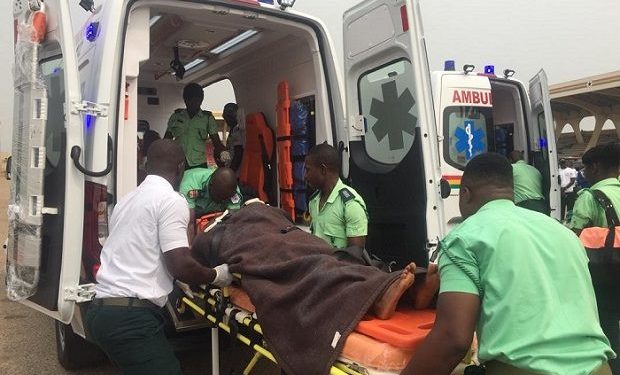


![From Protest to Power: Political Aggression and the Ethics of Civil Disobedience in Modern Democracies [FEATURE]](https://sikamantimes.com/wp-content/uploads/2025/11/Kwame-Nkrumahs-Ghana-From-Promise-to-Betrayal-img-350x250.jpg)
